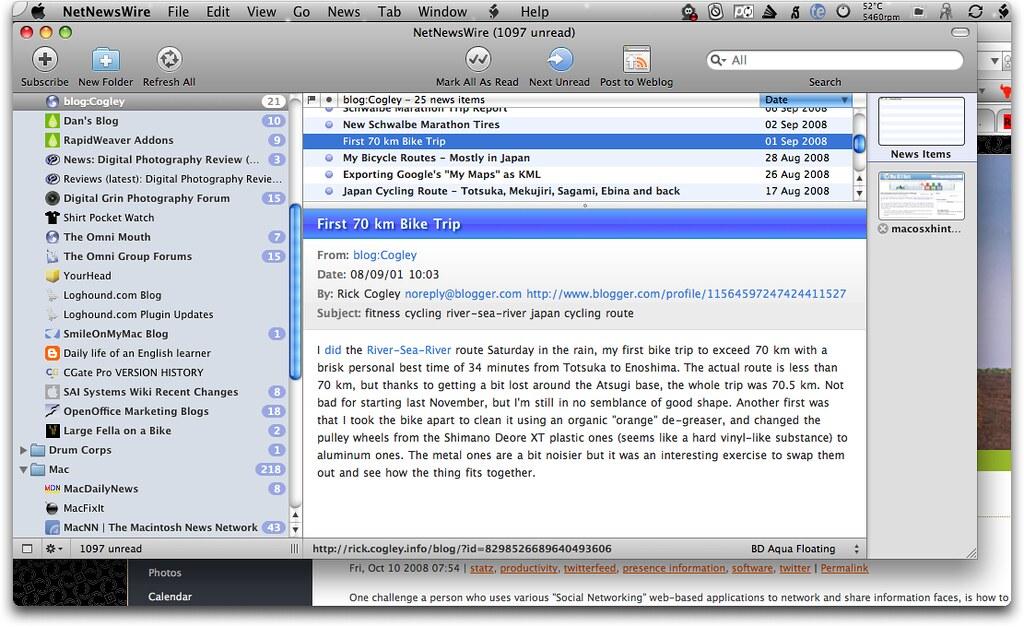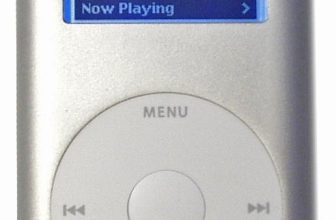
RSS feeds have become an essential tool for efficiently accessing and managing the vast content available on the internet. Whether you are a news enthusiast, a blogger, or simply someone who wants to stay updated with the latest information, understanding how to use RSS feeds can greatly enhance your online experience. In this article, we will explore the fundamental concepts of RSS feeds and provide you with a step-by-step guide on how to effectively utilize them. By the end, you will possess the knowledge needed to leverage RSS feeds to your advantage, enabling you to effortlessly keep track of your favorite websites and never miss out on the information that matters most to you.
Benefits of Using RSS Feeds
RSS feeds have become an essential tool for staying up-to-date with the ever-evolving online world. They offer a convenient way to receive updated content from your favorite websites, blogs, and news sources, all in one place. Let’s explore some of the and how you can make the most of this powerful technology.
1. Time-Saving Convenience
By subscribing to RSS feeds, you can save valuable time by avoiding the need to visit multiple websites individually. Instead, the latest articles, blog posts, or news updates are delivered directly to your RSS feed reader. This allows you to quickly scan through headlines and summaries, deciding which content is worth your attention and which can be skipped. It’s like having a personalized news aggregator that keeps you informed effortlessly.
2. Customization and Organization
RSS feeds offer a high level of customization, allowing you to select the sources and topics that interest you the most. This means you have control over the content that appears in your feed reader, ensuring that you receive only relevant updates. Additionally, you can organize your feeds into categories or folders, making it easier to navigate and find specific content. With the ability to tailor your RSS feed reader to your preferences, you can create a curated and personalized reading experience.
3. Privacy and Advertisement-Free Experience
Unlike social media platforms or websites, RSS feeds provide a more private and focused reading experience. With no need to create accounts or share personal information, you can enjoy the content without concerns about privacy. Additionally, RSS feeds typically don’t contain distracting advertisements, allowing you to focus solely on the articles and news you’re interested in. It’s a breath of fresh air in the age of data collection and targeted advertising.
4. Offline Access and Synchronization
Another incredible advantage of RSS feeds is their ability to provide offline access to your preferred content. With the right RSS feed reader, you can download articles or news updates and read them even when you’re not connected to the internet. This is particularly useful when traveling or in areas with limited connectivity. Furthermore, if you use multiple devices, RSS feeds can be synchronized across them, ensuring you never miss a headline, no matter which device you’re using.
5. Stay Updated and Informed
One of the main is the ability to stay updated and informed about the topics that matter to you most. By subscribing to reliable sources and thought-provoking blogs, you can expand your knowledge, discover new ideas, and stay on top of the latest trends within your niche. Whether you’re a passionate researcher, a student, or simply a curious individual, RSS feeds provide an invaluable resource for continuous learning and growth.

Selecting the Right RSS Reader
Finding the right RSS reader is crucial for efficiently managing and organizing your RSS feeds. With so many options out there, it can be overwhelming to choose the one that best suits your needs. In this post, we will explore some key factors to consider when for you.
-
Compatibility: Before settling on an RSS reader, it is important to ensure that it is compatible with your device and operating system. Some readers may only be available for certain platforms, such as Windows, Mac, iOS, or Android. Be sure to choose one that works seamlessly with your device to ensure a smooth user experience.
-
User Interface: The user interface of an RSS reader plays a significant role in how enjoyable and efficient your RSS feed reading experience will be. Look for a reader that offers a clean and intuitive interface. It should allow you to easily navigate through your feeds, mark articles as read, and organize them into folders or categories, making it effortless to find the content you are looking for.
-
Features and Customization: Consider the features and customization options that each RSS reader offers. Some readers provide advanced options for filtering and sorting articles, enabling you to prioritize the content that matters most to you. Look for features like keyword filtering, customizable layouts, and the ability to integrate with other services such as social media platforms or read-it-later apps.
-
Offline Support: If you frequently find yourself in areas with limited or no internet access, having an RSS reader that supports offline reading can be extremely beneficial. Make sure the reader you choose allows you to download articles and synchronize your feeds for offline use. This way, you can catch up on your favorite content even when you’re on the go or disconnected from the internet.
-
Integration: Consider how well the RSS reader integrates with your existing workflow and tools. If you are an avid user of productivity apps like Evernote or Pocket, you may want to choose a reader that seamlessly integrates with these services. Look for features such as the ability to save articles for later, share them on social media, or easily send them to other apps.
In conclusion, is crucial for a smooth and efficient reading experience. Consider factors such as compatibility, user interface, features and customization, offline support, and integration with your existing tools. By carefully evaluating these aspects, you can find the perfect RSS reader that meets your needs and makes keeping up with your favorite content a breeze.
Adding and Organizing RSS Feeds
can greatly enhance your online experience by allowing you to easily access and stay updated with your favorite content. Whether you want to keep up with news, blogs, podcasts, or any other type of regularly updated content, RSS feeds make it simple to aggregate all that information in one place. In this post, we will guide you through the process of how to use and manage RSS feeds effectively.
To add an RSS feed to your reader, start by finding the XML link associated with the feed you want to subscribe to. Look for an orange icon that typically indicates the presence of an RSS feed on a website. Right-click on the icon and select “Copy Link Address” or a similar option. Alternatively, you may find a link labeled “RSS” or “Subscribe” that you can click on to access the XML link directly.
Once you have copied the XML link, open your RSS reader and navigate to the “Add Feed” or “Subscribe” option. Paste the XML link into the provided field and click “Add” or “Subscribe.” The reader will then fetch the feed and display the latest content from that source. Repeat this process for any additional feeds you want to add.
To organize your RSS feeds, consider creating folders or categories. This will help you keep your feeds grouped based on your interests or preferences. For example, you might have folders for technology, news, sports, or personal blogs. Some readers allow you to create nested folders for further organization. Having a well-organized feed structure makes it easier to find and read the content you care about most.
To stay organized and avoid clutter, periodically review your RSS feeds and unsubscribe from any sources that are no longer relevant or interesting to you. This will ensure that your reader remains focused on delivering the content that matters to you. Most readers provide a simple way to unsubscribe from a feed, usually by right-clicking on it and selecting an option like “Remove Feed” or “Unsubscribe.”
In conclusion, using and managing RSS feeds can significantly improve your online experience. By adding feeds to your reader and organizing them effectively, you can effortlessly access all your favorite content in one place. Remember to regularly review and update your feed subscriptions to stay focused on the information that truly matters to you. So why wait? Start exploring and subscribing to RSS feeds today!
Customizing RSS Feeds for Personalized Content
RSS feeds are a powerful tool that allows users to receive updated content from their favorite websites and blogs in one convenient location. By customizing RSS feeds, you can personalize the content you receive and tailor it to your specific interests. This article will guide you through the process of customizing RSS feeds, so you can stay informed and never miss any important updates.
-
Finding the Right RSS Reader: To begin customizing your RSS feeds, you’ll need to choose an RSS reader that suits your needs. There are many options available, both online and as downloadable apps. Some popular choices include Feedly, NewsBlur, and Inoreader. Once you have selected an RSS reader, create an account and familiarize yourself with its features.
-
Adding RSS Feeds: The next step is to start adding RSS feeds to your reader. Most websites and blogs have an orange RSS icon that indicates the availability of an RSS feed. When you come across a site or blog you’d like to follow, simply click on the RSS icon and copy the feed URL. Then, paste this URL into your RSS reader’s search or add feed function. Repeat this process for all the websites and blogs you want to include.
-
Organizing Feeds into Categories: As you start subscribing to more and more RSS feeds, it’s helpful to organize them into categories. This will make it easier to navigate and locate specific content. In your RSS reader, look for options to create folders or tags and assign them to each feed. For example, you could have categories like “News,” “Technology,” ”Health,” or whatever suits your interests.
-
Filtering and Customizing Content: Many advanced RSS readers offer filtering options that allow you to refine the content you receive further. These filters can be based on keywords, specific authors, or even specific websites. By setting up filters, you can ensure that you only see the content that truly matters to you. Additionally, some readers offer customization features that enable you to adjust the appearance of your RSS feed display, such as font size, color scheme, or layout.
-
Managing and Updating Feeds: Over time, you may find that your interests change, or certain feeds become less relevant. It’s important to regularly review and manage your RSS feeds to ensure you are receiving the most valuable and engaging content. Take the time to unsubscribe from feeds that are no longer of interest and discover new ones that align with your evolving preferences. By regularly updating and fine-tuning your RSS feeds, you can ensure a personalized and curated stream of content that keeps you informed and entertained.
In summary, customizing RSS feeds allows you to tailor the content you receive to match your specific interests. By finding the right RSS reader, adding feeds, organizing them into categories, filtering content, and regularly managing and updating your feeds, you can create a personalized and informative collection of content that keeps you connected to the latest news, blogs, and articles that matter to you. Use these tips to get started and make the most out of RSS feeds!
Maximizing Efficiency with Advanced RSS Features
RSS feeds are a powerful tool for staying up to date with your favorite websites and blogs. In this post section, we will explore some advanced features of RSS feeds that can help you maximize efficiency and get the most out of your reading experience.
-
Categorize and organize your feeds: One useful feature is the ability to categorize your feeds into folders. This allows you to easily separate and organize your different interests and topics. For example, you could have folders for news, technology, sports, and more. By grouping similar feeds together, you can quickly navigate to the content that matters most to you.
-
Filter and customize your content: Another handy feature is the ability to filter and customize the content that appears in your RSS reader. You can choose to only display articles that contain certain keywords or exclude articles from specific sources. This can help you focus on the information that is most relevant to you and weed out any unwanted noise.
-
Use notifications and alerts: If you don’t want to miss important updates, RSS feeds allow you to set up notifications and alerts. You can receive email or mobile notifications whenever a new article is published by your favorite sources. This is especially helpful for time-sensitive news or when you want to stay on top of breaking developments in your industry.
-
Discover new content with recommendations: RSS feeds not only keep you informed about your chosen sources but also allow you to discover new content related to your interests. Some readers provide personalized recommendations based on your reading habits and the articles you’ve liked or saved. This can open up new avenues of exploration and expose you to different perspectives.
-
Sync your feeds across devices: With the ability to sync your RSS feeds across different devices, you can easily switch from reading on your phone to your tablet or computer without missing a beat. By logging in to your account, you can access your feeds and read where you left off, ensuring a seamless reading experience no matter which device you prefer.
In conclusion, taking advantage of the advanced features offered by RSS feeds can greatly enhance your reading efficiency. From organizing and customizing your feeds to receiving timely notifications and discovering new content, these features allow you to tailor your reading experience to your unique needs and preferences. So why not give them a try and start maximizing efficiency with your RSS feeds today?
Q&A
Q: What is an RSS feed?
A: An RSS feed is a technology that allows users to easily access and receive updates from their favorite websites or blogs. It stands for Really Simple Syndication and is a standard XML format used to publish frequently updated content.
Q: How does an RSS feed work?
A: Websites that offer RSS feeds create a specially formatted XML file that contains information about the latest articles, blog posts, or other content. Users can subscribe to these feeds using an RSS reader application or a web browser that supports RSS. The RSS reader periodically checks for updates and displays them in a structured and easily readable manner.
Q: Why would I want to use an RSS feed?
A: RSS feeds provide a convenient way to stay up-to-date with the latest content from multiple sources without having to visit each website individually. By subscribing to your favorite blogs, news websites, podcasts, or any other RSS-enabled sites, you can receive all the updates in one centralized location, saving time and effort.
Q: How do I use an RSS feed?
A: To get started, you’ll need an RSS reader or aggregator. There are various options available, ranging from standalone applications to online services and web browser extensions. Once you have an RSS reader, you can search for the RSS feed URL of your preferred website. Look for an orange RSS icon or the term “RSS” on the website, which will likely lead you to the feed URL. Copy and paste that URL into your RSS reader, and you’ll start receiving updates from that source.
Q: Can I customize the RSS feed content I receive?
A: Yes, most RSS readers allow you to organize and categorize your subscribed feeds based on your interests. Some readers also offer advanced filtering options, allowing you to exclude certain keywords or topics from appearing in your feed. You have control over which sources you subscribe to and can easily add or remove feeds as per your preferences.
Q: Are RSS feeds still widely used today?
A: RSS feeds, while not as popular as social media platforms, remain widely used by individuals who prefer having full control over the content they consume without relying on algorithms or timelines. Many websites still offer RSS feeds, making it a valuable tool for consuming news, blog posts, or any content frequently updated.
Q: Can RSS feeds be accessed on smartphones?
A: Absolutely! There are numerous RSS reader applications available for both iOS and Android devices. These applications allow you to sync your feeds across multiple devices, ensuring you can access your favorite content seamlessly, whether on your smartphone, tablet, or desktop.
Q: Are there any downsides to using RSS feeds?
A: Although RSS feeds offer many benefits, it’s important to note that not all websites provide RSS feeds. Additionally, some websites may offer partial feeds or require a subscription to access their full content. Moreover, RSS readers may vary in terms of features, user interface, and ease of use, so finding the one that suits your preferences might require some trial and error.
Q: Are there any alternatives to RSS feeds?
A: Yes, social media platforms and email newsletters serve as alternatives to RSS feeds. However, they come with their own limitations, including algorithm-driven content curation and potential inbox clutter. Ultimately, it depends on personal preferences and the type of content consumption experience you seek.
Q: Is using an RSS feed free?
A: Yes, subscribing to and using RSS feeds is typically free of charge. While some RSS reader applications may offer premium features at a cost, there are plenty of reliable free options available to efficiently manage your RSS subscriptions. In conclusion, RSS feeds can be powerful tools for staying informed and organized in the vast world of online content. By simplifying the process of gathering news and updates from multiple sources, RSS feeds offer a convenient way to streamline your online experience. Whether you are a news enthusiast, a blogger, or simply someone who wants to keep up with the latest trends and developments, mastering the use of RSS feeds can save you time and effort. By following the steps outlined in this article, you can start harnessing the power of RSS feeds to customize your information intake, tailor your content consumption, and enjoy a more efficient online browsing experience. So, go ahead and explore the numerous RSS feed readers and applications available, and make the most out of the vast amount of information available at your fingertips. Happy feed reading!






